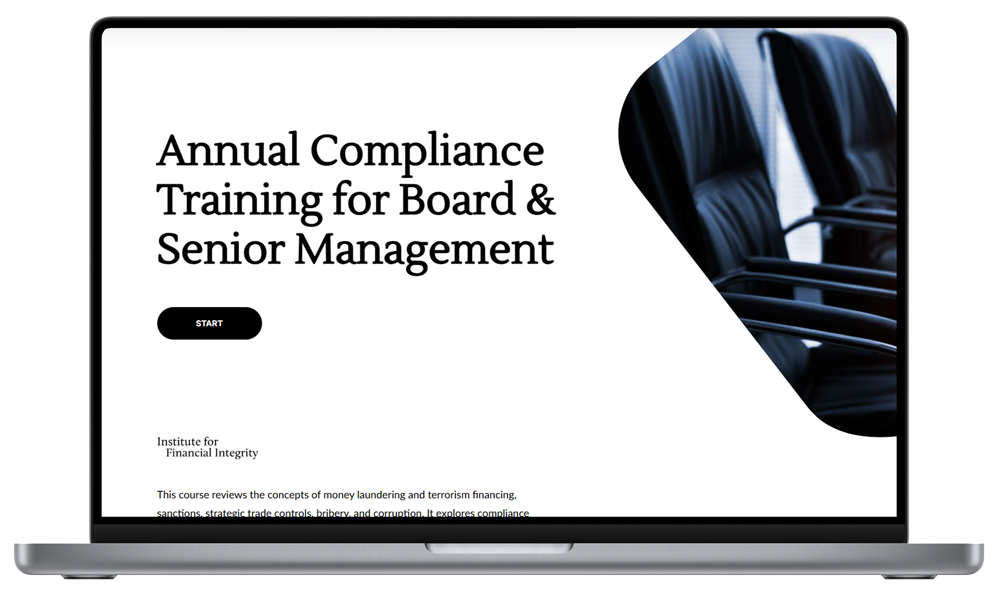Where Boards and Senior Management Fall Short on Compliance Oversight
Four Common Gaps Leaving Leaders and Their Institutions Exposed
📅 November 18, 2025
📅 November 18, 2025
When compliance failures make the news, they’re rarely the result of missing policies. More often, the breakdown happens at the top, when boards assume that reviewing reports or approving frameworks is enough. On paper, the oversight looks fine. In practice, the engagement just isn’t there.
The reality is that many boards don’t fail because they ignored compliance altogether. They fail because they took a surface-level approach—listening without leaning in, acknowledging risks without challenging them. Regulators see this for what it is: passive oversight. And when oversight is passive, risks don’t quietly go away; they build until they become scandals.
One of the most common pitfalls for boards is mistaking awareness for oversight. It’s easy to sit through a compliance update, nod at the right moments, and move on to the next agenda item. But regulators are increasingly asking a tougher question: what did the board do with the information they were given?
A passive approach—receiving reports without probing deeper—creates blind spots. Red flags may be raised internally, but if they aren’t challenged, tested, or escalated by the board, they can fester until they erupt into full-blown crises.
Active oversight looks very different. It means directors leaning in, asking uncomfortable questions, pressing for clarity when something doesn’t add up, and making sure risks are addressed rather than just documented. Regulators want to see evidence of this engagement; meeting minutes that capture not just presentations received but real dialogue and challenge from the board.
The difference is simple but profound: passive boards become spectators to risk; active boards shape how it is managed.
Another trap boards often fall into is assuming the compliance function can shoulder accountability on its own. It’s tempting to think, “That’s what the Chief Compliance Officer is for”—but regulators don’t see it that way.
Compliance officers bring expertise, but they are not a shield. Their role is to advise, inform, and guide. The board’s role is to own the decisions. Increasingly, regulators are asking not just whether the compliance team flagged risks, but whether senior leaders acted on those warnings.
When boards lean too heavily on compliance officers, two things happen: first, risks get siloed, and second, leadership loses credibility with regulators and investors. A strong board doesn’t just listen to compliance; it tests assumptions, weighs trade-offs, and takes responsibility for how those risks are managed.
Oversight can’t be outsourced. It has to be owned.
Even the most engaged boards can stumble if they don’t fully understand the risks in front of them. Financial crime risks today are not only broader but also more technical, and that creates blind spots at the leadership level.
Some boards underestimate how sanctions can be evaded through complex corporate structures or affiliates. Others don’t grasp the pace at which fraud is evolving—where AI-generated deepfakes, synthetic identities, and biometric spoofing are already being used to outsmart controls. Cyber threats and data privacy lapses add yet another layer of exposure, with breaches capable of eroding trust in a matter of hours.
The challenge isn’t that boards don’t care, it’s that without the right knowledge, they can’t ask the right questions. And when leaders don’t have visibility into these risks, oversight becomes reactive instead of strategic.
Closing these awareness gaps doesn’t mean turning every director into a compliance technician. It means ensuring the board has the context, training, and confidence to engage meaningfully with management, spot red flags, and connect risk decisions back to the institution’s broader resilience and reputation.
For many boards, “training” means a once-a-year briefing or a generic online module. It ticks the box, but it doesn’t prepare leaders for the kinds of complex, fast-moving risks they’re expected to oversee.
This kind of surface-level approach feeds a check-the-box only culture. Directors may technically complete the requirement, but they don’t walk away with the knowledge or confidence to challenge management or spot weak points.
The most effective boards treat training as more than a compliance exercise. They see it as a leadership tool. Scenario-based sessions, interactive discussions, and regular refreshers keep directors sharp and ensure that oversight is both meaningful and defensible. More importantly, it signals to staff and stakeholders that the commitment to compliance starts at the very top.
When boards invest in their own learning, they set the tone for the entire institution.
The gaps we’ve highlighted: passive oversight, overreliance on compliance officers, blind spots in risk awareness, and a check-the-box only approach to training—are highlighted by regulators again and again. And when they go unaddressed, they don’t just put the institution at risk; they put directors and senior leaders personally in the spotlight.
The good news is that each of these pitfalls can be avoided. Boards that lean in, stay informed, and invest in their own readiness are better positioned to meet rising expectations and build trust with regulators, investors, and customers alike.

At IFI, our Annual Compliance Training for Board & Senior Management is designed with these exact challenges in mind, equipping directors and executives to move beyond surface-level oversight and demonstrate real accountability in the boardroom.
Because at the end of the day, effective oversight isn’t about delegation—it’s about leadership.
Reach out to us at info@finintegrity.org to schedule a demo.









 IFI Announces Delivery of Financial Crime Compliance Training Program at the...
IFI Announces Delivery of Financial Crime Compliance Training Program at the...This site uses cookies. By continuing to browse the site, you are agreeing to our use of cookies.
Accept settingsHide notification onlySettingsWe may request cookies to be set on your device. We use cookies to let us know when you visit our websites, how you interact with us, to enrich your user experience, and to customize your relationship with our website.
Click on the different category headings to find out more. You can also change some of your preferences. Note that blocking some types of cookies may impact your experience on our websites and the services we are able to offer.
These cookies are strictly necessary to provide you with services available through our website and to use some of its features.
Because these cookies are strictly necessary to deliver the website, refusing them will have impact how our site functions. You always can block or delete cookies by changing your browser settings and force blocking all cookies on this website. But this will always prompt you to accept/refuse cookies when revisiting our site.
We fully respect if you want to refuse cookies but to avoid asking you again and again kindly allow us to store a cookie for that. You are free to opt out any time or opt in for other cookies to get a better experience. If you refuse cookies we will remove all set cookies in our domain.
We provide you with a list of stored cookies on your computer in our domain so you can check what we stored. Due to security reasons we are not able to show or modify cookies from other domains. You can check these in your browser security settings.
These cookies collect information that is used either in aggregate form to help us understand how our website is being used or how effective our marketing campaigns are, or to help us customize our website and application for you in order to enhance your experience.
If you do not want that we track your visit to our site you can disable tracking in your browser here:
We also use different external services like Google Webfonts, Google Maps, and external Video providers. Since these providers may collect personal data like your IP address we allow you to block them here. Please be aware that this might heavily reduce the functionality and appearance of our site. Changes will take effect once you reload the page.
Google Webfont Settings:
Google Map Settings:
Google reCaptcha Settings:
Vimeo and Youtube video embeds:
You can read about our cookies and privacy settings in detail on our Privacy Policy Page.
Privacy Policy